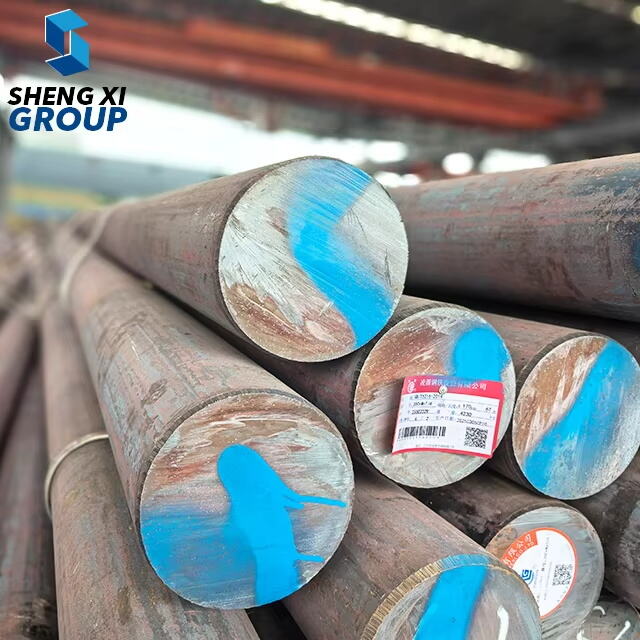Introduction to Mould Steel Fundamentals
Mould steel stands out as one of those essential materials found throughout manufacturing sectors where it plays a key part in making all sorts of molds and dies. What makes this stuff special? Well, manufacturers design it to handle pretty harsh conditions during production runs including intense pressure levels, scorching heat exposure, plus constant friction from repeated use. Without proper mould steel, factories wouldn't be able to shape everything from car parts to household items by pressing metals, plastics, rubbers and countless other substances into precise forms. Think about injection molding plants or stamping facilities running 24/7 - they rely heavily on quality mould steel to keep their operations running smoothly day after day.
Getting to grips with what makes mould steel tick matters a lot for anyone working in engineering or manufacturing who needs to pick the right material for their job. When someone knows the basics about things like how strong it is, how tough it stands up to stress, and whether it will hold its shape under pressure, they're better equipped to keep their production runs precise and their tools lasting longer than expected. The wrong choice here can really throw off efficiency across the whole manufacturing line while also affecting the quality of whatever comes out at the end. Some shops have learned this lesson the hard way after wasting time and money on subpar results from improper steel selections.
Key Properties of Mould Steel Types
Hardness and Wear Resistance
The hardness of mould steel plays a really important role in how well it performs during manufacturing operations. When steel has good hardness, it stands up better against things like deformation and wear, which makes it essential for components that go through stamping or milling processes. Carbon content inside the steel matters a lot when talking about hardness levels. Generally speaking, the more carbon there is in the steel, the harder it becomes. Most mould steels fall somewhere between 30 and 62 on the Rockwell Hardness Scale (HRC). This gives manufacturers quite a bit of flexibility since they need materials that work under various pressure conditions. Because of this broad range of hardness options available, factories can pick out exactly what kind of steel will best handle whatever specific challenges come up in their particular production setup.
Toughness and Corrosion Resistance
Toughness matters a lot for mould steel too, particularly in situations where there's impact or sudden shocks involved. Basically, it tells us how well the steel can soak up energy and bend without breaking apart completely, something really important if we want our structures to hold up against tough conditions. Speaking of challenges, corrosion resistance becomes a big deal whenever these steels come into contact with things like strong chemicals or damp environments. Picking the correct type of steel according to what kind of environment it will face helps stop it from wearing away gradually. Many professionals recommend adding certain metals like chromium during production to boost both toughness levels and protection against rust, making sure everything lasts longer even when faced with rough conditions day after day.
Primary Categories of Mould Steel
Hot Work vs Cold Work Die Steels
Hot work die steels have been designed specifically to handle intense heat, which makes them perfect for things like die casting processes where temperatures run really high. What sets these apart is how they hold up over time even when exposed to extreme conditions because they resist heat so well and keep their shape without warping. Cold work die steels serve completely different purposes though. They're what manufacturers rely on for jobs done at normal room temperature, think stamping out parts or cutting metal sheets. The main thing about cold work steels is their toughness factor. They need to withstand all sorts of pounding and pressure without breaking down. When looking at both types side by side, there's quite a gap in terms of hardness levels and how each reacts to temperature changes. Understanding these distinctions matters a lot in real world manufacturing situations since it directly affects how precise the final products will be and just how long those expensive tools last before needing replacement.
Plastic Mould Steels
Plastic mold steels get made specifically for injection molding jobs where getting those fine details right matters a lot. Manufacturers usually mix in stuff like chromium or nickel to make these steels work better, finding that sweet spot between being hard enough but still tough when needed. When companies pick the right kind of mold steel for their application, they see less time wasted on machine breakdowns and save money overall. The production runs smoother too. These materials handle all sorts of shop floor situations pretty well, which is why so many different plastic parts end up looking good even after mass production runs.
In summary, understanding the primary categories of mould steelsâhot work, cold work, and plastic mould steelsâis essential for optimizing manufacturing processes. Selecting the appropriate type based on the application needs and environmental factors can significantly impact the efficiency and durability of tooling systems.
Material Selection Criteria
Application-Specific Requirements
Choosing the right mould steel depends largely on what the particular job actually needs. Temperature conditions, pressure levels, and the kind of materials being worked with all play their part in this decision. Take high temperature scenarios for instance. Using heat resistant mould steel here really makes a difference not just for how long the mold lasts but also affects the end product quality. Things look different when dealing with cooler temps or alternative materials though. The priorities change somewhat then, often pointing toward characteristics like hardness or impact resistance becoming more important. Getting familiar with exactly what physical traits and chemical makeup certain steels have relative to what they'll be used for helps ensure whatever gets selected works properly under real world conditions.
Cost vs Performance Considerations
For manufacturers working within limited budgets, finding the right balance between price and performance matters a lot when choosing mould steel. Sure, better quality steel comes at a higher price tag initially, but these grades tend to last much longer in service. Longer tool life means fewer replacements needed and less time spent dealing with machine stoppages for repairs. Looking at things this way makes sense economically speaking. When companies take the time to evaluate both what something costs today versus how well it performs over time, they usually end up saving money in the long run. Most toolmakers know that spending a bit extra on good quality steel pays off handsomely down the road through improved productivity across multiple production cycles.

Processing Techniques for Mould Steel
Heat Treatment Methods
The various heat treatment approaches used in metalworking, including quenching and tempering, play a major role in improving how strong and tough mould steel becomes. When we apply these treatments, they actually change what's happening at the microscopic level inside the steel, making it harder and more durable than before. This matters a lot when the steel needs to perform well in tough industrial settings where failure isn't an option. Properly applied heat treatments significantly boost how resistant the steel is to fatigue, so it can keep working even after being stressed repeatedly over long periods. For factory owners looking to get the most out of their materials, getting these heat treatment processes right means producing mould steel that stands up better against wear and tear while lasting much longer between replacements.
Surface Finishing Processes
The way we finish surfaces matters a lot for mould steel quality in manufacturing. When done right, surface finishing cuts down on friction between parts and stops those annoying defects from showing up in finished products. That makes all the difference in how smooth the production runs day after day. Advanced treatments like special coatings really boost corrosion resistance and general performance of these steels. We're talking about materials that need to hold up against some pretty tough conditions in today's factories. Beyond just making things work better, good surface treatment actually extends how long the mould lasts before needing replacement. Most shops find this saves money in the long run while keeping their operations running reliably without constant downtime for repairs or part failures.
Industry Applications of Mould Steel
Injection Molding Solutions
In injection molding, mould steel really makes all the difference when it comes to getting those precise, durable parts we need for quality plastic components. What sets good mould steel apart is how it handles complex shapes without letting go of those tight tolerances manufacturers demand. Picking the right type of mould steel matters a lot for cutting down on what each part actually costs to make. The reason? Quality mould steel stands up to thousands of those high pressure shots into the mold cavity without warping or deforming, which means the finished products still meet specifications after every cycle. And this isn't just about better quality stuff coming off the line either. Companies save money across the board when their moulds last longer and produce fewer rejects during production runs.
Die Casting Implementations
In die casting operations, mould steel plays a vital role across numerous manufacturing sectors, allowing production of metal parts that meet tight tolerances and showcase superior surface finishes. One reason why mould steel remains so popular among foundries is its ability to handle extreme pressures throughout the casting process without deforming, which helps maintain product consistency batch after batch. When companies need those fine details on their castings, from automotive components to industrial equipment parts, mould steel delivers what other materials simply cannot match. The market keeps pushing toward higher standards of both precision and longevity, something mould steel naturally supports given its inherent properties. As such, we see this particular alloy holding onto its position as a go to solution for many die casting applications despite ongoing technological advancements in alternative materials.
FAQs
What is the importance of mould steel in manufacturing?
Mould steel is essential in manufacturing as it provides durability and precision in the creation of molds and dies, ensuring high-quality production processes.
How do the properties of hardness and toughness impact mould steel selection?
Hardness and toughness influence the performance of mould steel by dictating its ability to withstand wear, deformation, and impact, essential for selecting the right steel type for specific applications.
Why is corrosion resistance vital in mould steel?
Corrosion resistance is crucial for mould steel exposed to harsh environments, as it prevents degradation, maintains structural integrity, and prolongs the steelâs lifespan.
What are the main types of mould steel?
Main types of mould steel include hot work die steels, cold work die steels, and plastic mould steels, each suited for different manufacturing processes such as die casting and plastic injection molding.
How can processing techniques improve mould steel performance?
Processing techniques, like heat treatment and surface finishing, enhance mould steel by improving its hardness, durability, fatigue resistance, and corrosion resistance.


